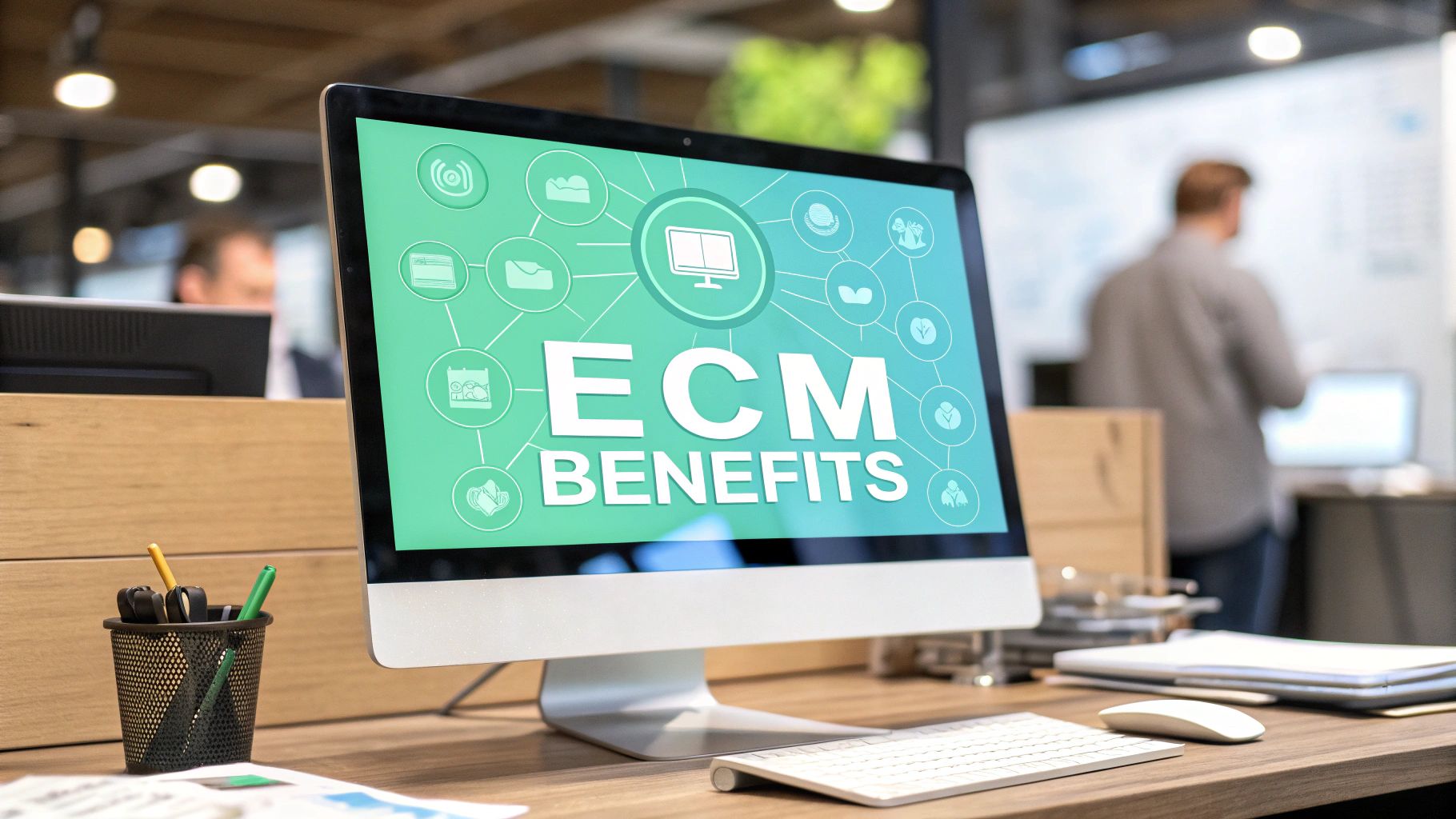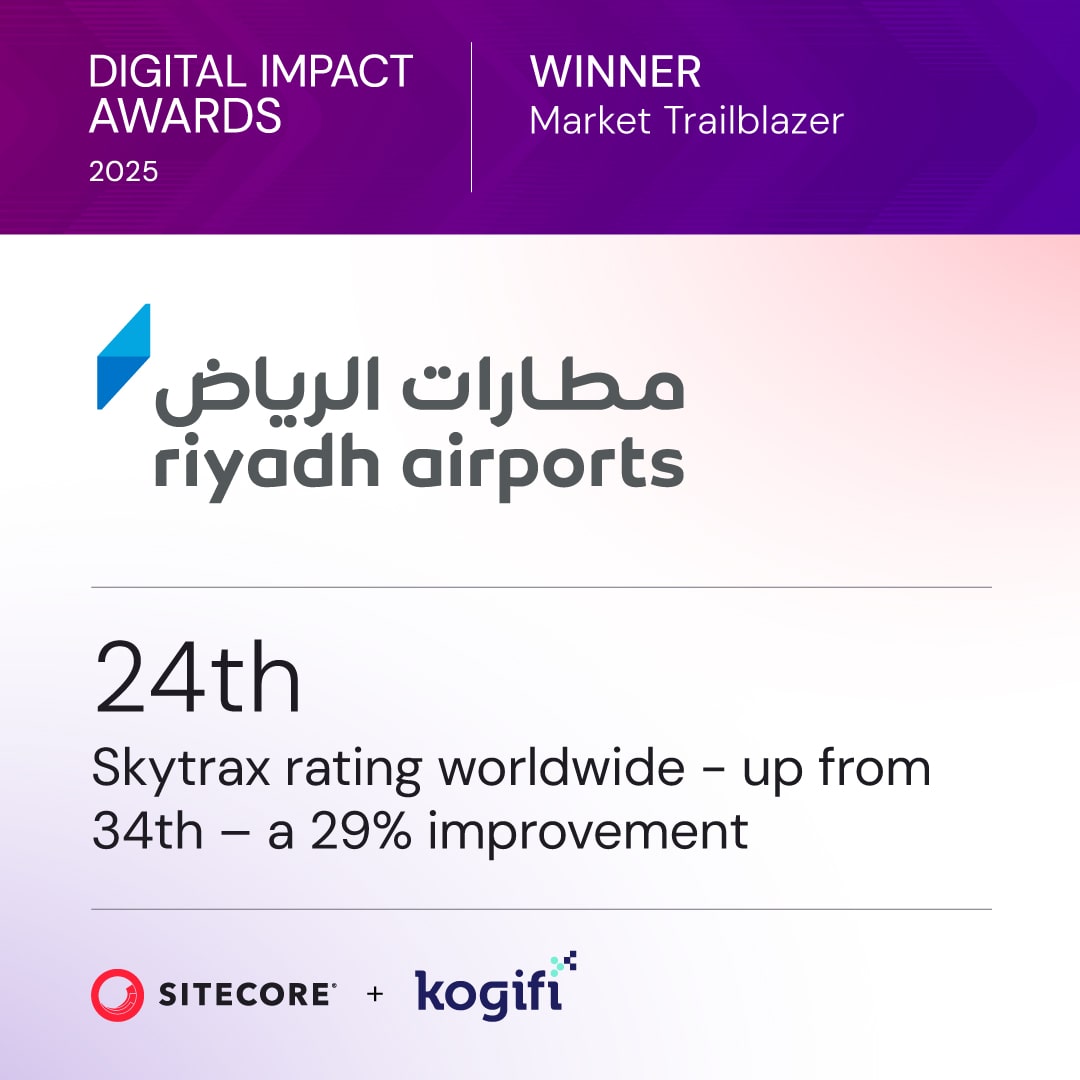In a competitive business environment, managing the sheer volume of enterprise content—from documents and emails to rich media and customer data—is a critical challenge. Many businesses struggle with information silos, inefficient workflows, and security risks, hindering their growth and ability to innovate. This is where a robust Enterprise Content Management (ECM) system transforms from a simple storage solution into a strategic business asset.
This article moves beyond generic advice to provide deep, actionable insights into the core benefits of enterprise content management. We will explore how leading platforms, particularly the Sitecore ecosystem and its integration capabilities with solutions like Microsoft SharePoint, can be leveraged to not only solve these challenges but also to create a seamless, intelligent, and secure Digital Experience Platform (DXP). Many of the advantages of ECM align directly with the broader key benefits of business process automation, offering insights into how digital transformation drives success.
Whether you're considering a new implementation with an expert partner or optimizing your current system, understanding these seven key benefits is the first step toward unlocking true operational excellence. We'll delve into enhanced security, improved efficiency, centralized knowledge, cost reduction, better collaboration, scalability, and robust disaster recovery, providing practical steps for each.
1. Enhanced Document Security and Compliance
One of the most critical benefits of enterprise content management is the fortification of digital assets through advanced security and rigorous compliance frameworks. An ECM strategy acts as a centralized, secure vault for all your critical business content, from intellectual property and financial records to sensitive customer data. It moves beyond simple password protection, offering granular control over who can view, edit, share, or delete information, thereby minimizing the risk of both internal and external threats.
This centralized control is crucial for organizations in highly regulated industries. For instance, a financial institution can leverage ECM to enforce strict access protocols on customer data, ensuring compliance with banking regulations. Similarly, a pharmaceutical giant relies on ECM to secure proprietary research and development documents while adhering to stringent FDA requirements.

How to Implement Robust Security with ECM
While foundational platforms like SharePoint offer strong, built-in security features, a modern ECM strategy requires a more comprehensive, composable approach. Integrating a Digital Experience Platform (DXP) like Sitecore elevates security to a new level. Sitecore's granular, role-based access controls and sophisticated personalization rules can double as security layers, ensuring that only authenticated users from specific segments can access sensitive internal or external-facing content. For instance, Sitecore Content Hub's Digital Asset Management (DAM) capabilities provide robust rights management (DRM) to control how and where assets are used, a critical feature for brand compliance.
To effectively secure your content ecosystem, consider these actionable steps:
- Implement Role-Based Access Control (RBAC): Define user roles within Sitecore or your chosen ECM based on job functions and responsibilities. Assign permissions to roles rather than individual users to simplify management and reduce the risk of error.
- Establish Audit Trails: Configure your system to log all user activity. This creates an unchangeable record of who accessed, modified, or downloaded a document and when, which is invaluable for compliance audits and security investigations.
- Automate Retention Policies: Leverage Sitecore's content lifecycle management features to automatically enforce document retention and disposal schedules, ensuring compliance with regulations like GDPR or HIPAA without manual intervention.
By strategically implementing these features, organizations can transform their ECM from a simple storage solution into a dynamic defense mechanism that protects their most valuable digital assets.
2. Improved Operational Efficiency and Productivity
Another of the key benefits of enterprise content management is the dramatic enhancement of operational efficiency and productivity. An ECM ecosystem, especially one powered by a platform like Sitecore, acts as a central nervous system for business processes. It automates content-heavy workflows, minimizes manual data entry, and eliminates the time employees waste searching for information across disparate systems. This automation frees up valuable human resources to focus on strategic, high-value tasks instead of repetitive administrative duties.
This boost in efficiency has a tangible impact on the bottom line. For instance, a global manufacturer leveraging Sitecore Content Hub can slash its marketing content production time by automating approvals and distribution. Similarly, a financial services firm can transform its contract approval process, reducing turnaround times from weeks to mere days. These examples showcase how a well-implemented ECM strategy moves beyond simple document storage to become a powerful engine for process optimization. To fully grasp the impact of ECM, it's essential to understand what operational efficiency entails and how to effectively boost it.

How to Drive Productivity with ECM
While platforms like SharePoint provide basic workflow capabilities, a sophisticated DXP like Sitecore unlocks advanced process automation. For example, within Sitecore Content Hub, a new product image uploaded to the DAM can automatically trigger a workflow that notifies marketing, legal, and product teams for review. Once approved, the asset is automatically pushed to the Sitecore XM Cloud for publication on the corporate website, ensuring content consistency and speed to market. This level of integrated automation creates a seamless flow of information from back-end creation to front-end customer experiences.
To effectively boost your team’s productivity, consider these actionable steps:
- Map Existing Processes: Before automating, thoroughly document your current content workflows. Identify bottlenecks, redundancies, and manual touchpoints that are prime candidates for automation within Sitecore.
- Start with High-Impact Workflows: Begin by automating high-volume, critical processes like marketing campaign content creation or product information management (PIM). These quick wins will demonstrate immediate value and build momentum.
- Provide Comprehensive Training: Ensure users are well-trained on the new automated workflows within the Sitecore ecosystem. Ongoing support and clear documentation are crucial for maximizing adoption and realizing the full productivity gains.
- Measure Performance: Establish key performance indicators (KPIs) like content creation time, error rates, and time-to-market to measure the impact of your automation efforts and identify areas for further improvement.
By systematically applying these strategies, your ECM becomes a catalyst for a more agile and productive organization, transforming how you manage the entire content lifecycle.
3. Centralized Information Repository and Knowledge Management
A core benefit of enterprise content management is the creation of a unified digital repository, a "single source of truth" where all organizational content is stored, organized, and accessible. This centralization breaks down the information silos that plague many businesses, where crucial data is trapped in disparate emails, local drives, and disconnected cloud accounts. An ECM system ensures consistency, preserves invaluable institutional knowledge, and empowers employees to find and leverage existing assets with unprecedented speed.
This centralized hub is vital for large, distributed organizations. A global enterprise can implement a knowledge management system built on Sitecore to serve its worldwide employees, allowing teams to access case studies, brand assets, and expert insights instantly. This central hub, often powered by Sitecore Content Hub, ensures brand consistency and operational alignment across all markets.

How to Build an Effective Knowledge Hub with ECM
While SharePoint can serve as a foundational document library, true knowledge management requires a more intelligent platform. Sitecore, especially with its Content Hub offering, transforms a static repository into a dynamic knowledge engine. Its powerful semantic search capabilities allow users to find not just documents, but specific information within them. Furthermore, its ability to connect with various backend systems (like SharePoint) and frontend channels (like websites or apps) means it can orchestrate the delivery of personalized content, ensuring employees or customers see the most relevant information based on their role, region, or past interactions.
To effectively establish a centralized repository, consider these actionable steps:
- Develop a Comprehensive Information Architecture: Before migrating content, architect a logical structure within Sitecore with clear taxonomies and metadata schemas. This ensures content is organized intuitively and is easily discoverable.
- Establish Strong Governance Policies: Implement standardized naming conventions and content lifecycle rules. This includes processes for content creation, review, and archival to prevent the repository from becoming cluttered and outdated.
- Leverage AI for Content Intelligence: Utilize Sitecore's AI features for auto-tagging content, identifying relationships between assets, and recommending relevant information to users, fostering a culture where knowledge is proactively shared and discovered.
By centralizing information in an intelligent platform, you not only improve efficiency but also safeguard against knowledge loss when employees leave, turning individual expertise into a durable, accessible corporate asset.
4. Cost Reduction and Resource Optimization
A significant financial benefit of enterprise content management is its direct impact on cost reduction and resource optimization. By transitioning from paper-based or siloed digital workflows to a centralized system, organizations can drastically cut operational expenses. A platform like Sitecore automates manual tasks, reduces content duplication, and minimizes costs associated with managing disparate, legacy systems, leading to a substantial return on investment.
This operational efficiency translates into measurable savings. For example, a global brand can save millions annually by centralizing its digital assets in Sitecore Content Hub, eliminating redundant agency fees and rework. Similarly, by automating content delivery to multiple channels from a single source, companies reduce the manual effort and associated costs of managing a fragmented digital presence. These figures highlight how an ECM strategy is a strategic tool for optimizing the bottom line.
The following bar chart visualizes the average savings realized through ECM implementation, illustrating the significant impact on key operational cost centers.

The data clearly shows that organizations can achieve dramatic reductions in operational overhead, contributing to an impressive average ROI.
How to Maximize Cost Savings with ECM
Achieving these savings requires a strategic approach. While SharePoint can help digitize documents, integrating it into a broader Sitecore DXP ecosystem amplifies the financial benefits. Sitecore's composable architecture allows for the automation of both internal processes and customer-facing content delivery, reducing manual effort across the entire content value chain. For instance, creating a piece of content once and automatically deploying it across a website, mobile app, and email campaign saves significant time and resources.
Beyond the direct benefits of ECM, other technological advancements also contribute to financial advantages, for instance, by understanding how AI drives cost reduction across organizations you can further enhance your optimization strategy. To effectively leverage your ECM for cost reduction, consider these actionable steps:
- Target Content-Intensive Processes First: Begin your implementation by focusing on departments like marketing, sales enablement, or product management. Automating content creation, management, and distribution in these areas delivers the quickest and most significant ROI.
- Embrace a Composable, Cloud-Native Architecture: Opt for a cloud-native solution like Sitecore's XM Cloud to eliminate the capital expenditure and ongoing maintenance costs associated with on-premise servers. This model provides predictable, subscription-based pricing and superior scalability.
- Track and Measure Savings: Establish key performance indicators (KPIs) before you begin. Track metrics such as reduction in content creation time, asset reuse rates, and agency spending to quantify your ROI and justify further investment.
By strategically digitizing and automating, an ECM becomes a powerful engine for financial efficiency, freeing up capital and human resources to focus on core business growth.
5. Enhanced Collaboration and Communication
Another of the core benefits of enterprise content management is its ability to dismantle silos and foster a truly collaborative environment. A system like Sitecore Content Hub serves as a single source of truth, providing teams with shared workspaces, real-time annotation and review tools, and robust version control. This unified platform ensures that every team member, regardless of their physical location, is working with the most current information, eliminating confusion and redundant effort.
This capability is essential for global enterprises managing distributed teams. For instance, a global marketing organization can leverage Sitecore's Marketing Resource Management (MRM) capabilities to enable teams across different continents to collaborate seamlessly on complex campaigns. This streamlines everything from initial planning and budgeting to content creation and final approval, accelerating time-to-market.
How to Foster Collaboration with ECM
While foundational tools like SharePoint, part of Microsoft 365, provide basic document co-authoring, Sitecore provides a purpose-built environment for high-stakes content collaboration. Sitecore Content Hub’s collaborative workflows are designed specifically for the content lifecycle. A marketing team can use it for internal campaign planning and content creation, then seamlessly push the approved assets to Sitecore XM Cloud for publication on the corporate website or partner portals. This integration ensures a cohesive workflow from creation to delivery.
To build a more effective collaborative framework, consider these actionable steps:
- Establish Clear Collaboration Guidelines: Create and communicate clear protocols for project workflows, review processes, and asset metadata within Sitecore. This ensures consistency and makes it easier for teams to manage content.
- Utilize Project Templates: Set up standardized project templates and workflows within Sitecore Content Hub for recurring tasks like marketing campaigns or product launches. This saves time and ensures all necessary governance steps are followed.
- Implement Approval Workflows: Configure automated review and approval processes with clear stages and stakeholder assignments. This ensures that content is properly vetted before being finalized or published, maintaining quality and compliance.
- Provide Targeted Training: Offer training sessions focused on the specific collaborative features of the Sitecore platform. This ensures users are comfortable with tools like annotation, versioning, and status tracking, maximizing adoption and efficiency.
6. Scalability and Flexibility for Growing Organizations
A key benefit of enterprise content management is its capacity to grow alongside your business. Modern, composable ECM systems like those from Sitecore are architected for scalability, meaning they can handle increasing volumes of data, more users, and evolving operational demands without performance degradation. This inherent flexibility, especially with cloud-native solutions, ensures your content infrastructure remains a strategic asset, not a growth-limiting liability.
This adaptability is essential for dynamic organizations. For example, a fast-growing e-commerce brand must rapidly scale its content systems to manage an exponential increase in product information, digital assets, and personalized customer experiences. A scalable, composable DXP architecture allows a business to seamlessly expand its operations, whether it’s entering new markets or launching new digital touchpoints like a mobile app or IoT device.
How to Ensure Scalability with Your ECM
While cloud platforms like SharePoint Online offer basic scalability, true future-proofing comes from a composable, API-first architecture. When you build your ecosystem around a headless DXP like Sitecore XM Cloud, you create a powerful, flexible foundation. This allows your backend content repository (like Sitecore Content Hub or even a federated SharePoint instance) to scale independently from your frontend delivery channels. This provides unparalleled agility to add new websites, mobile apps, or other digital touchpoints as your business expands without re-engineering your core content hub.
To build a content management strategy that scales, consider these actionable steps:
- Plan for Future Growth: During the initial architecture design, project future needs for storage, user load, and functionality. Choose a cloud-native, microservices-based platform like Sitecore that is proven to support enterprise-level scale.
- Adopt a Composable Architecture: Utilize Sitecore's headless capabilities to decouple your content management from your presentation layer. This "composable" approach offers maximum flexibility to adapt and grow your digital presence.
- Implement Tiered Storage and Archiving: Optimize costs and performance by creating automated policies to move older, less frequently accessed content to lower-cost storage tiers while keeping active assets in high-performance storage.
By focusing on a flexible, composable architecture, you ensure your ECM not only supports current needs but also accelerates future growth. To select the right platform for your needs, you can explore this detailed content management system comparison and see how different solutions stack up.
7. Disaster Recovery and Business Continuity
Beyond daily operations, a significant benefit of enterprise content management is its role as a cornerstone for robust disaster recovery and business continuity. A cloud-native ECM system ensures that critical information remains accessible and operations can continue even in the face of unforeseen disruptions, such as natural disasters, hardware failures, or cyberattacks. By centralizing and digitally preserving content in a resilient cloud environment, it eliminates single points of failure associated with physical documents or scattered local files.
This capability is essential for organizational resilience. During a regional power outage, a company with a cloud-based ECM like Sitecore XM Cloud can maintain operations seamlessly, as its data is stored in geographically separate data centers, unaffected by the local disruption. Similarly, the rapid shift to remote work during the COVID-19 pandemic was significantly smoother for companies that had already adopted modern ECM, as their teams could securely access necessary content from anywhere.
How to Implement Effective Business Continuity with ECM
Modern SaaS platforms like Sitecore XM Cloud and Content Hub provide a strong foundation for data protection, with built-in redundancy and backup protocols managed by Sitecore. This multi-layered defense ensures that not only your internal content is safe, but your entire digital presence can be restored quickly. While a platform like SharePoint also offers cloud-based resilience, Sitecore's DXP provides a more holistic approach covering the entire customer experience delivery chain.
To build a resilient content ecosystem, consider these actionable steps:
- Understand Your Provider's SLA: For a SaaS solution like Sitecore, thoroughly review the Service Level Agreement (SLA) to understand the guarantees for uptime, data backup frequency, and recovery time objectives (RTO).
- Automate and Test Recovery Plans: Even with a managed SaaS platform, you must have an internal plan. Regularly test your team's ability to operate during a simulated outage. Ensure you have offline or alternative access to critical documentation and that your team knows the recovery procedures.
- Leverage Geographic Redundancy: Confirm that your SaaS ECM provider, such as Sitecore, replicates your data across different geographic regions. This protects against regional disasters and outages, guaranteeing availability and business continuity.
By leveraging the capabilities of a modern, cloud-native ECM, an organization transforms its content repository into a strategic asset for business continuity and resilience.
7-Key Benefits Comparison Matrix
From Strategy to Action: Maximizing Your ECM Investment
Throughout this exploration of the benefits of enterprise content management, a clear theme emerges: modern ECM is not just about storing files; it's about activating your content as a strategic asset. We've journeyed through seven critical advantages, from fortifying document security and ensuring regulatory compliance to dramatically improving operational efficiency and productivity. Each benefit represents a pillar supporting a more resilient, agile, and intelligent organization.
The power of a centralized information repository cannot be overstated. By transforming scattered data into a single source of truth, you empower teams, streamline knowledge management, and foster a culture of informed decision-making. This consolidation directly fuels cost reduction by eliminating redundant systems and optimizing resource allocation across your enterprise.
Bridging Technology and Business Outcomes
The true potential of these benefits is unlocked when the right technology is paired with expert strategy. For instance, platforms like SharePoint provide a functional foundation for internal document collaboration. However, for organizations aiming for a truly sophisticated, integrated content strategy, Sitecore's composable DXP offers a superior suite of tools designed for the entire content lifecycle.
With solutions like Sitecore Content Hub, businesses can manage everything from content planning and creation to omnichannel distribution and performance analysis. This integrated approach ensures that every piece of content is consistent, compliant, and optimized for its intended audience, directly enhancing the benefits of enterprise content management discussed earlier, such as improved collaboration and scalability.
Actionable Steps for Your ECM Journey
Realizing these advantages requires a deliberate and strategic approach. Merely deploying a system is not enough; true transformation is born from thoughtful implementation. To move from theory to practice, consider these critical next steps:
- Conduct a Content Audit: Before you can manage your content, you must understand it. Identify where your information lives, who owns it, and how it flows through your organization. This audit will reveal bottlenecks, security risks, and opportunities for consolidation.
- Define Your Governance Framework: Establish clear rules for content creation, access, retention, and disposal. A robust governance plan is the bedrock of compliance and security, ensuring your ECM system operates within legal and internal policy constraints.
- Prioritize a Phased Rollout: Avoid a "big bang" implementation. Start with a specific department or use case to demonstrate value and gather feedback. This agile approach allows you to refine your strategy, build momentum, and ensure user adoption.
Ultimately, mastering enterprise content management means transforming your organization's relationship with information. It’s a shift from viewing content as a static byproduct of business operations to recognizing it as a dynamic driver of growth, innovation, and competitive advantage. By strategically implementing a solution that aligns with your specific needs, whether leveraging the collaborative power of SharePoint within a broader Sitecore ecosystem or embracing the comprehensive digital experience capabilities of Sitecore's DXP, you are not just adopting new software. You are investing in a more efficient, secure, and future-proof foundation for your entire enterprise.
Ready to turn your content challenges into strategic opportunities? The team at Kogifi specializes in architecting and implementing sophisticated ECM solutions, with deep expertise in Sitecore and SharePoint. Contact us to discover how we can help you unlock the full benefits of enterprise content management and build a powerful digital foundation for your business. Kogifi








































